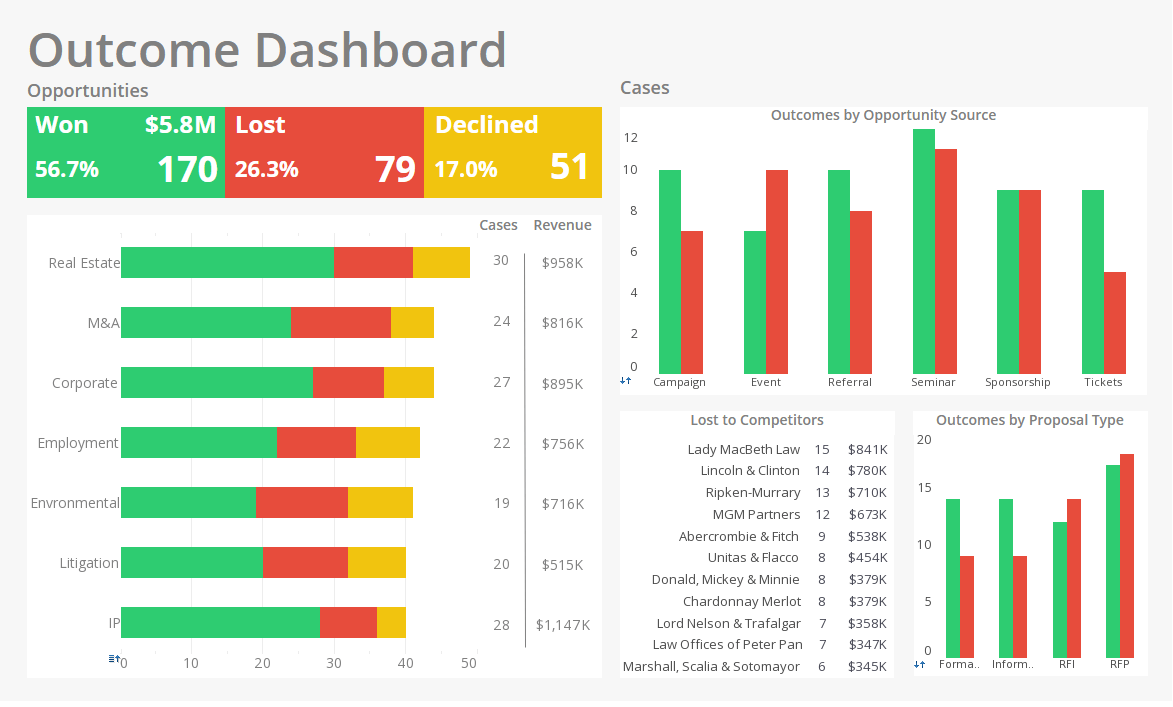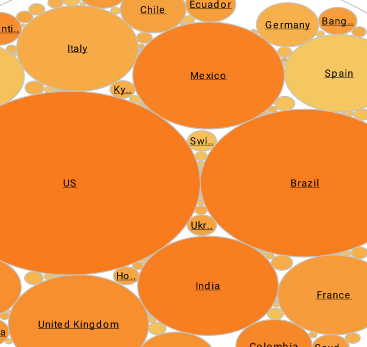Creating Database Reports
Are you searching for ways to create database reports? InetSoft's award-winning reporting tool supports a multitude of databases.
Our reporting focused solution, Style Report Enterprise, is a cost effective and time efficient software application developed for organizations looking to create and analyze high quality reports. Style Report Enterprise is a Web-based reporting tool that provides production, interactive, and ad hoc reports, simplifying the work for your organization.
Want to learn more? Contact us for more information and we'll make sure to guide you along the right path.
| #1 Ranking: Read how InetSoft was rated #1 for user adoption in G2's user survey-based index | Read More |
Why InetSoft for Creating Reports?
Powerful Reporting Application
Our 100% Web-based, zero-client reporting software will provide your organization with all the right tools and features to help you satisfy your needs and wants. With the slew of available options, like real-time viewing, queued reports to email, and/or server and client-based printing, users have control over the data they want to utilize and present for simplified and/or thorough viewing and analysis.
In addition to all the available options, we also make using these tools and the interface user-friendly. Without losing quality on the final product, users can customize their report using the software's word processor and HTML-like layout, exclusive library of presentation elements, and expanding formula tables. Other services include configurable data and report page cache, simultaneous report threading control, clustered reporting, and bursting and scheduled reports.
What makes InetSoft's solution ideal for enterprises of all different sizes is the element of security. By allowing individuals, roles, groups, or functional modules security control on data cells, reports, and folders, users can maintain tight security over their data and network. To beef up security, organizations even have HTTPS support and can encrypt PDF outputs.
Database Access
Architecture
InetSoft's patent pending Data Block technology, powered by Data Modeler and Asset Composer, enables speedy data access across a range of data sources including relational databases, multi-dimensional databases, Web services, flat files, and more:
- Data Modeler - arranges raw data into business data items such as models and queries
- Asset Composer - creates more sophisticated, fine-tuned, data assets represented as Data Worksheets.
In InetSoft's BI Suite, StyleBI, the Data Block technology is integrated into the server. For database sources, it takes full advantage of database power by retrieving data directly from the original source or from pre-aggregated materialized views.
 |
Learn the advantages of InetSoft's small footprint BI platform. |
Data Access Features
- Access Multiple Data Sources - connect to relational databases, multi-dimensional databases, XML, SOAP, EJB, Java objects (POJO), flat files, etc.
- End-user Defined Data Mashup - combine data within a single data source or across multiple data sources into unified data sets using union, intersection, minus, inner/outer joins, etc.; simple drag-and-drop interface gives business users maximum self-service – a unique capability of StyleBI
- Reusability/Collaboration - reuse objects such as queries, worksheets, viewsheets, and report components for efficient team collaboration
- Virtual Private Model (VPM) - create virtual private models to limit data-level access by user, role, or group designation
- OLAP Overlay - create multi-dimensional hierarchies on top of a logical model
- MOLAP Cubes - supports Essbase, IBM DB2 OLAP Server, MS Analysis Service, and Oracle OLAP
Data Mashup
A key success to InetSoft's business intelligence software has always been the data mashup capability. Data mashup allows for users to combine disparate data, from our slew of databases (along with others), to be used together. It's a platform on operational BI with an intuitive user interface that accelerates the usage of BI. Requirements that include reporting, OLAP, scorecards, dashboards, visualization, and ad hoc analysis are all met in one unified application.
Partner Quotation
"In keeping with our strategy of combining best of breed solutions with our own, we set out to find a technology partner to add advanced business intelligence capabilities to our EAM suite.
As our core solution is Web-based, that was a key criterion in our selection process. Beyond that we narrowed down our choice to InetSoft for their software's ease of use, in terms of integration and dashboard development for us, as well as for the plant or facilities managers who need an intuitive and attractive interface.
An added benefit was the ease of working with InetSoft, from the flexible approach to licensing terms to the help offered early on in the development cycle."
- Kay Jenkins, EVP of Products and Services at AssetPoint
 |
Learn about the top 10 features of embedded business intelligence. |
Steps to Create a Report in StyleBI Using Data from a MySQL Database and SugarCRM
This guide outlines how to use InetSoft's StyleBI to create a report that combines data from a traditional MySQL database and a SugarCRM instance (which uses a MySQL-compatible backend). The goal is to unify operational and CRM data in a single, dynamic StyleBI report.
Step 1: Prepare Access Credentials
- Obtain MySQL database connection details:
- Host, Port, Database Name
- Username and Password
- For SugarCRM:
- Access the SugarCRM MySQL database directly (usually hosted on the same server or a dedicated DB server).
- Get table names for leads, opportunities, accounts, etc.
- Ensure read-only access or credentials with least privilege.
Step 2: Connect Data Sources in StyleBI
- Login to the StyleBI backend (Style Intelligence server).
- Go to Data Sources and select New JDBC Data Source.
- Create two separate JDBC data sources:
- One for the general MySQL database
- One for the SugarCRM database
- Use the JDBC MySQL driver and test each connection for successful connectivity.
Step 3: Build a Worksheet to Join the Data
- Go to the Worksheet Designer in StyleBI.
- Create a new worksheet using both data sources.
- Drag in tables or views from both the MySQL and SugarCRM sources.
- Join data using common fields such as:
- Customer ID
- Email Address
- Account Number
- Apply filters to reduce dataset size if needed (e.g., date range, region).
- Create calculated columns if combining metrics or transforming values (e.g., Revenue per Lead).
Step 4: Create the Report
- Open the Report Designer or Dashboard Designer.
- Choose the worksheet you just built as the data source.
- Drag and drop visual components:
- Tables and pivot tables
- Bar, line, and bullet charts
- KPIs for totals, averages, or ratios
- Group by account, region, sales rep, or campaign source.
- Add filters for interactivity, such as time range, account status, or product category.
Step 5: Apply Formatting and Logic
- Use conditional formatting to highlight key metrics (e.g., overdue opportunities, low conversion rates).
- Add calculated fields and expressions in the report level if needed.
- Apply sorting, aggregation, or trendlines for better storytelling.
Step 6: Share, Schedule, or Embed
- Save the report to a shared workspace for access by business users.
- Set up user-level permissions to control visibility.
- Schedule the report for automatic generation (e.g., weekly executive summary).
- Embed it in your intranet portal using StyleBI’s embed code or REST APIs.
Step 7: Maintain and Update
- Document all joins, formulas, and assumptions used.
- Periodically validate data integrity as CRM schemas may change with upgrades.
- Monitor performance if working with large datasets and optimize queries if needed.

